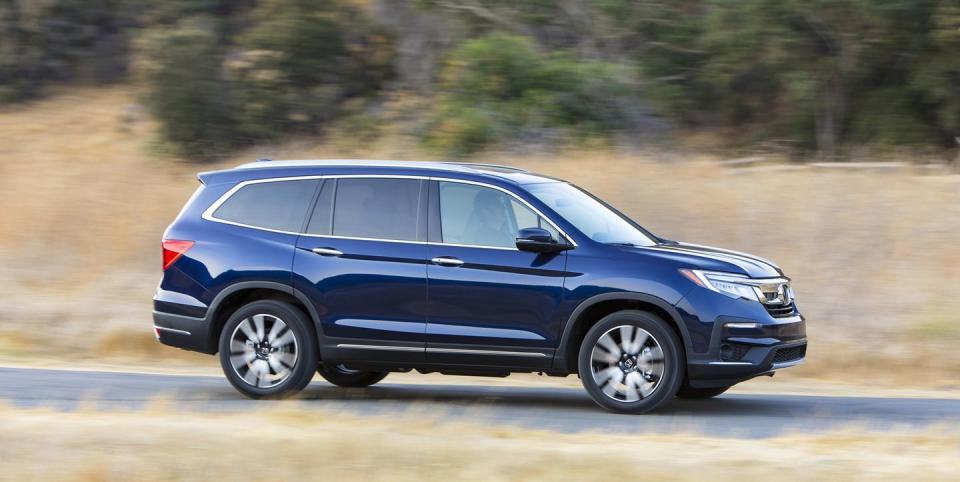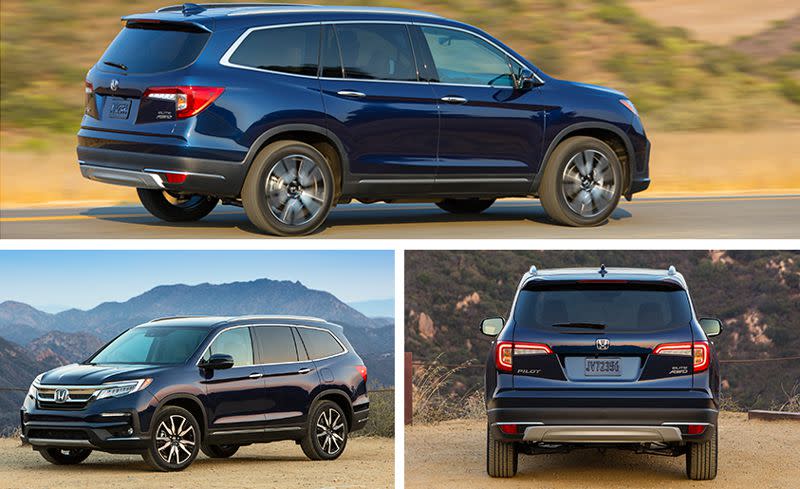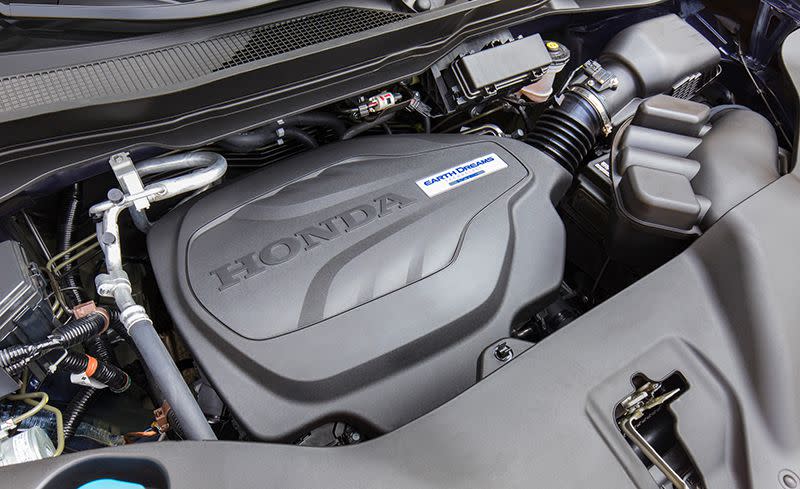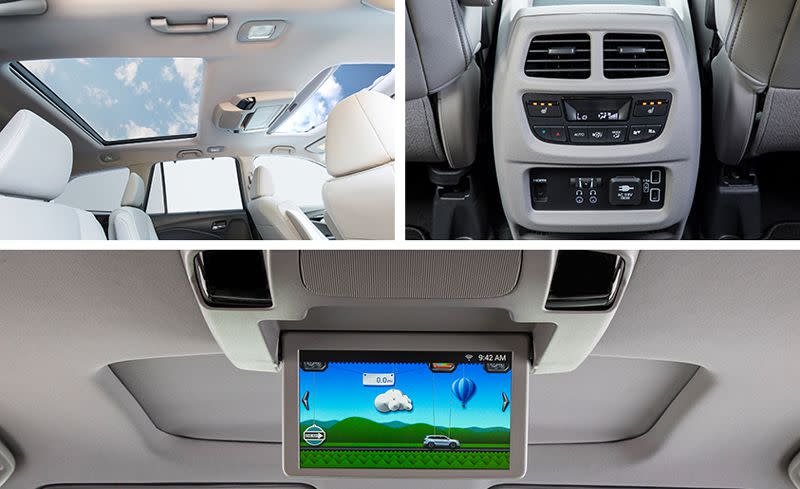The 2019 Honda Pilot Looks Tougher and Drives Better

We didn’t know that Honda wasn’t already aware that its three-row Pilot crossover looked a lot like a minivan. Most Honda employees that we’ve met over the years appear to have functioning eyes. But apparently, our (and presumably many others’) constant refrain about the Pilot’s mommy-mobile look stung.
Well, no more, bucko! Look at the 2019 Pilot’s plastic front and rear bumper covers, now partly painted silver to suggest the presence of skid plates. You know where you’d find skid plates? On a real SUV. A minivan wouldn’t have skid plates, would it? No, it would not. Not even ones that are not actual skid plates. And the company changed out the old front grille, which was reminiscent of the Odyssey minivan’s, in hopes of projecting a square-jawed, tough-guy visage. That the new grille looks a lot like the Accord sedan’s is not a thing about which we are going to comment. Finally, the company has moved the reverse lights up from the rear-bumper cover into the taillight clusters. We’re not sure if that was part of the effort to make the Pilot seem less minivan-ish or if the company just liked it.
Does all of this make it look more SUV-ish? Well, not exactly. But we are aware that we’re on shaky ground ridiculing Honda for trying to make the Pilot look tougher after criticizing the company for how not rugged it looked before. We’re stuck between disparaging the silly dress-up game of disguising a perfectly good family vehicle as something tough and knowing that the current market reality necessitates it. “People buy these vehicles because of the image of them,” said a Honda spokesman, with only a touch of resignation in his voice.
More Than Skin Deep
But it’s not all just window dressing. Honda has actually addressed a few of the Pilot’s nonvisual shortcomings. We’ve complained multiple times about the ZF-supplied nine-speed automatic transmission in the top Touring and Elite models (lesser models get a six-speed auto) since the current generation arrived for 2016, including one we had for a long-term 40,000-mile test. The transmission was slow to downshift, making what is a relatively quick vehicle for its class feel a little sluggish and distant. Well, the nine-speed has been reworked, both mechanically and electronically, to be more responsive. And it works. The downshift delay is no longer conspicuous, and the transmission is now programmed to start in second gear under normal circumstances, which makes the initial throttle tip-in smoother than when it rushed through the short first gear. Honda also addressed the Pilot’s rough and inconsistent stop/start system, another of our gripes. There’s less delay on the restart, which happens just as you begin releasing brake-pedal pressure. It’s amazing how much difference a very small reduction in time can make in your perception of responsiveness.
As on some other recently updated models, Honda has given the Pilot a physical volume knob for the first time in this generation, part of an infotainment and gauge-cluster package ported over from the Odyssey minivan. It’s still not the most intuitive of infotainment systems, but it is less confounding and not as painfully slow to respond as the previous unit. Also inherited from the company’s minivan is CabinTalk, a system that allows front-row occupants to scold second- and third-row passengers over an intercom, even pausing any video being played on the rear-seat entertainment system. If you ever wanted to feel like the pilot of an airliner (or an Odyssey minivan), this is your chance. Speaking of airliners (and minivans), the 2019 Pilot’s rear-seat entertainment system now includes a puppet-themed “How Much Farther?” app that displays the time and distance to a destination in the manner of a flight tracker. Wireless phone charging and a 4G LTE Wi-Fi connection also are newly available.
Finally, Honda has made its Honda Sensing suite of driver-assistance systems standard on all versions of the Pilot. In most cases, prices are up slightly compared with last year’s model. The least expensive model, the $32,445 front-wheel-drive LX, and the most expensive, the $49,015 all-wheel-drive Elite, are both up $550 compared with the 2018 versions. But Honda notes that EX models, now standard with Honda Sensing, are near identical to the prices of last year’s EX when equipped with the then-optional Honda Sensing. So, there’s that.
Unchanged-and not really much in need of improvement-are the Pilot’s 280-hp 3.5-liter V-6 and optional i-VTM4 on-demand all-wheel-drive system, the latter of which is a $1900 option on all trims, except the Elite, where it is standard. The Pilot’s admirable fuel economy (22 mpg combined on the all-wheel-drive, nine-speed models we drove) remains the same as before.
The 2019 Pilot is a slightly better vehicle than the one it replaces, one that addresses some of the model’s more annoying shortcomings. It remains a solid family vehicle. Just be careful calling it a minivan surrogate when Honda folks are around.
('You Might Also Like',)

 Yahoo Autos
Yahoo Autos 


